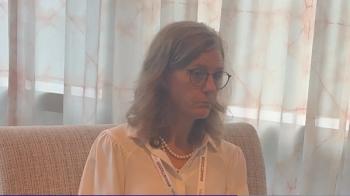
- Oncology Vol 28 No 4_Suppl_1
- Volume 28
- Issue 4_Suppl_1
(S034) Do Sociodemographic Factors Influence Outcome in Prostate Cancer Patients Treated With External Beam Radiation Therapy (EBRT)?
To determine if there is an influence of sociodemographic factors on biochemical control (bNED) and overall survival (OS) in prostate cancer (CaP).
Avielle Y. Movsas, Ramy Ibrahim, MD, Mohamed A. Elshaikh, MD, Lois Lamerato, PhD, Mei Lu, PhD, Alexandra Sitarik, MS, Deepak Pradhan, MD, Eleanor M. Walker, MD, Hans Stricker, MD, Svend O. Freytag, PhD, Indrin Chetty, PhD, Benjamin Movsas, MD, Farzan Siddiqui, MD, PhD; Henry Ford Hospital
Objectives: To determine if there is an influence of sociodemographic factors on biochemical control (bNED) and overall survival (OS) in prostate cancer (CaP).
Methods: CaP patients treated with definitive EBRT ± hormone therapy (HT) from 1997–2006 were analyzed. Patient demographics, treatment (Tx), and clinical outcomes were obtained from electronic medical records. Median household income (mHHI) at the census block group level was obtained from the 2000 census data. Data on disease and Tx parameters included Gleason score, pre-Tx prostate-specific antigen (PSA), T-stage, year of Tx, EBRT dose and technique, and use of HT. Patients were categorized as having low-, intermediate-, or high-risk disease. Sociodemographic factors included age, race, marital status, and mHHI. Biochemical failure was defined as nadir PSA + 2 ng/mL. OS was based on death from any cause.
Results: A total of 788 consecutive patients were studied, with a median follow-up of 7 years. African Americans (AAs) constituted 48% of the patients, while 46% of patients were white and 6% was other. Whites had an average mHHI of $59,235 compared with $36,917 for AAs (P < .001). After multivariable modeling, only radiation dose was predictive for bNED or OS. For biochemical failure, compared with radiation dose < 70 Gy, the hazard ratio (HR) was 0.69 (95% confidence interval [CI], 0.49–0.98) for 70–74 Gy and 0.48 (95% CI, 0.31–0.74) for ≥ 75 Gy; for mortality, the HR was 0.67 (95% CI, 0.50–0.89) for 70-74 Gy and 0.62 (95% CI, 0.43–0.89) for ≥ 75 Gy. No sociodemographic factors were predictive of either outcome.
Conclusions: This analysis suggests that sociodemographic factors are not prognostic in determining outcome in prostate cancer, as long as patients have access to current standards of care. Rather, only a treatment factor-the radiation dose-predicted for bNED and OS.
Proceedings of the 96th Annual Meeting of the American Radium Society -
Articles in this issue
Newsletter
Stay up to date on recent advances in the multidisciplinary approach to cancer.



















































































